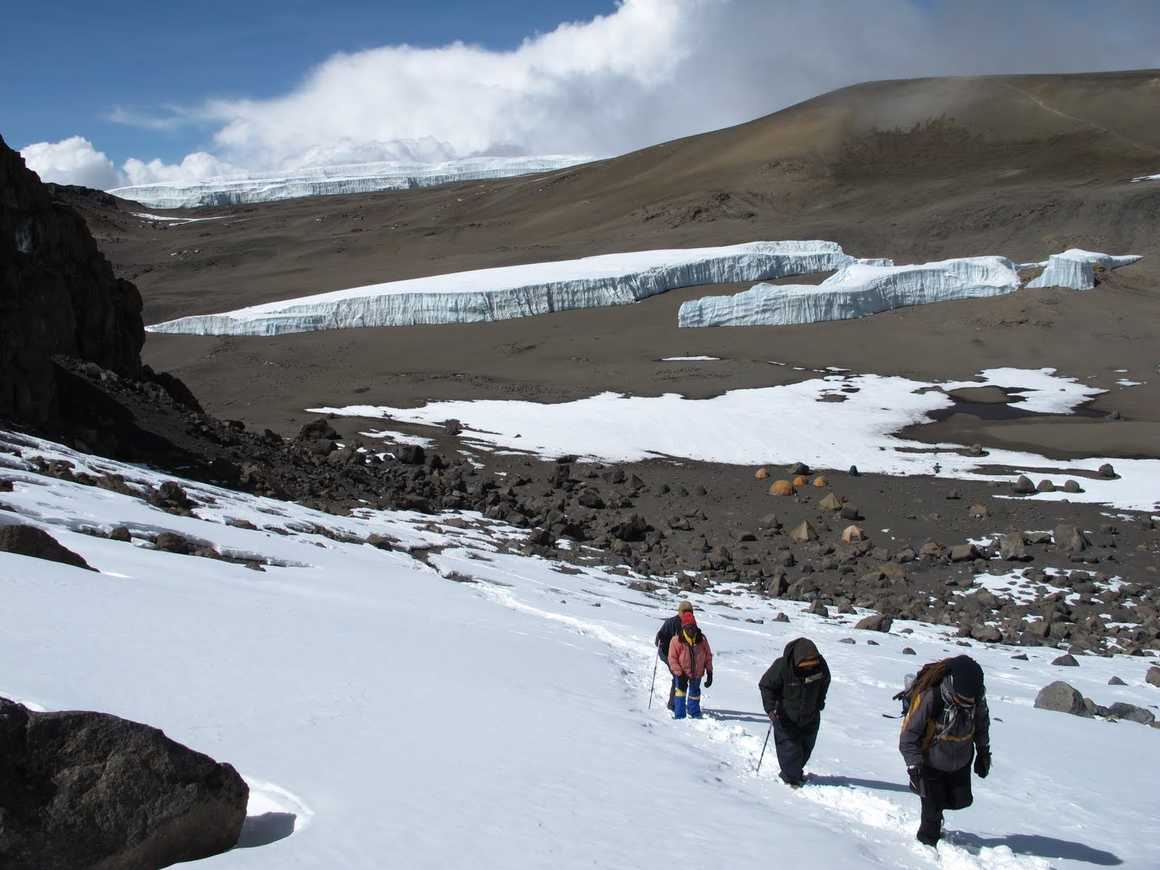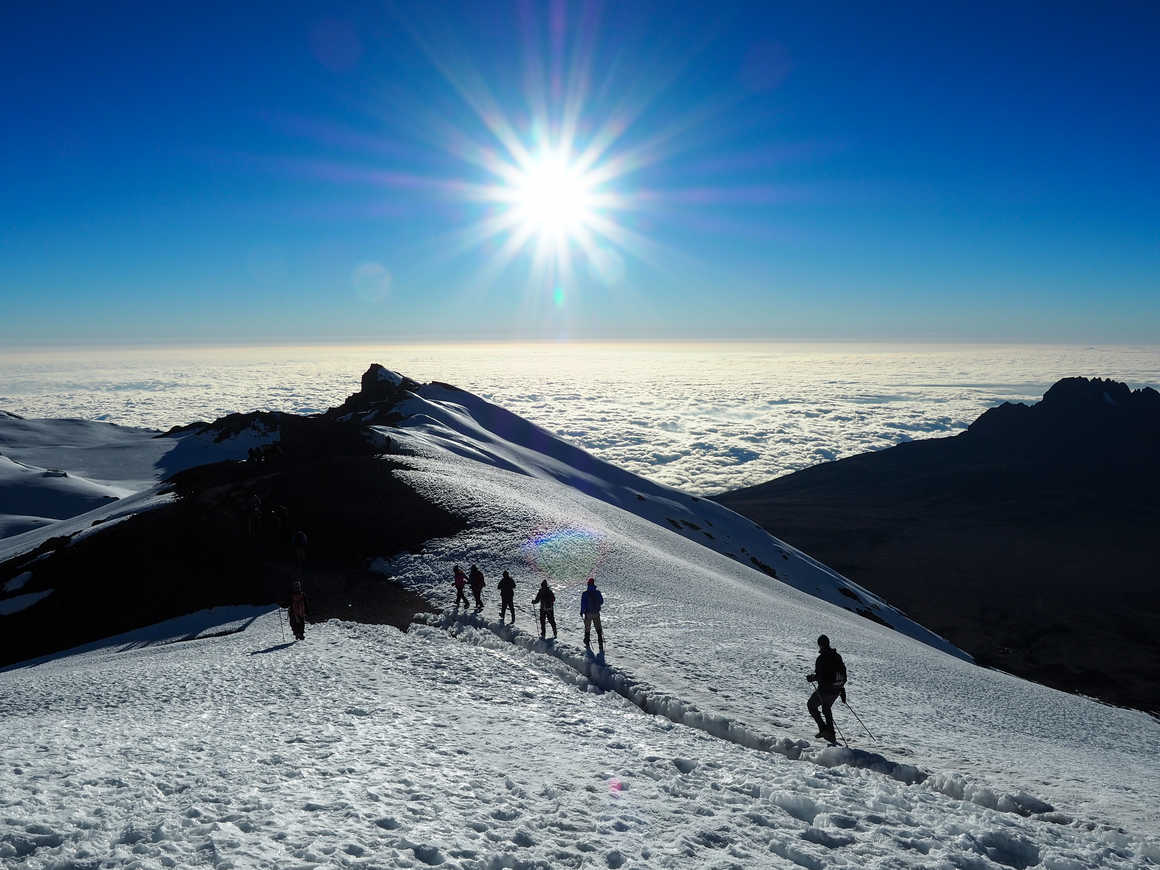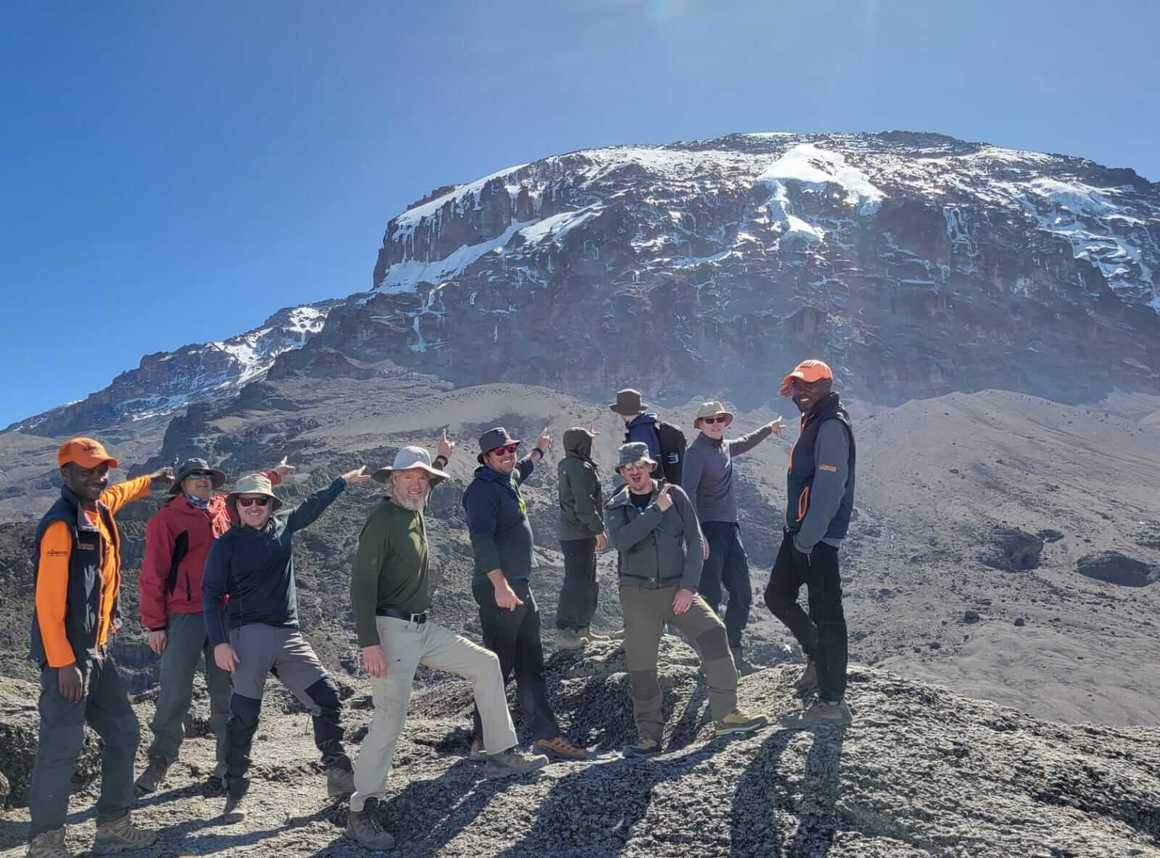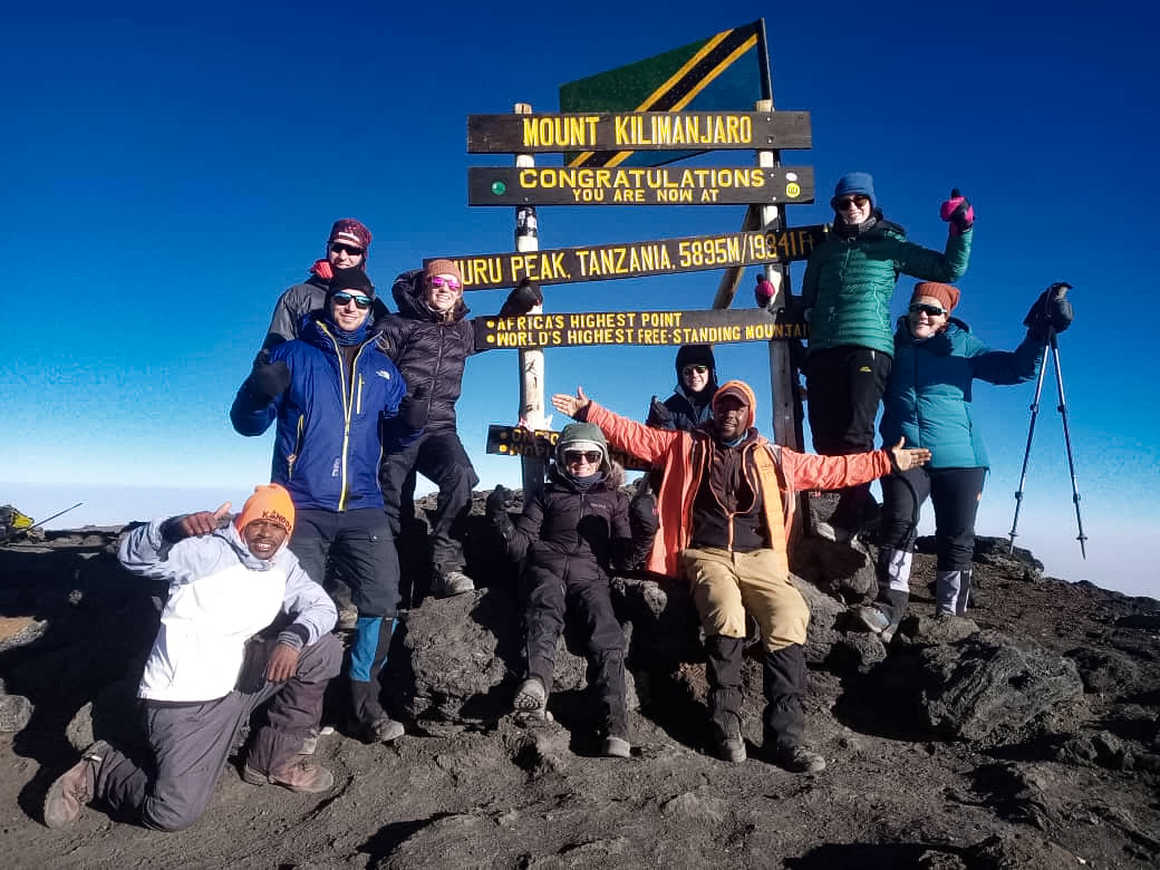Is kilimanjaro hard to climb?
The first thing that should be made clear is that climbing Kilimanjaro requires no technical climbing skills and is essentially a long, multiday hike. We therefore strongly believe that anyone with a decent fitness level and plenty of determination can trek to the summit of Kilimanjaro - and all of our successful clients attest to this. We have taken people from all over the world to the top of Kilimanjaro and with an average Kilimanjaro success rate of over 98%, we like to think we're pretty damn good at it.

Are you up to the challenge?
Though we do believe a strong mental attitude will get you to the summit, Kilimanjaro is not an easy mountain to climb and there are a number of key factors to consider before attempting it such as the Kilimanjaro route itinerary, trip length, effects of altitude and training for Kilimanjaro. Careful consideration of such factors will help you determine whether you're up to the challenge or not.
trip Length
Most routes up Kilimanjaro are in the region of 70 km in length. Depending on how experienced a trekker you are, 70 km may or may not seem like a tough distance to cover. In reality, even for a new trekker, 70 km is not particularly tough-going when you consider that the average person walks at 5 km per hour, although you will travel less than this when ascending Kilimanjaro. Porters will also be by your side to carry all your large gear and this will make the trek considerably easier.
On average, you'll be trekking between 6 and 7 hours each day for the duration of your trek depending on your itinerary and summit day will be significantly longer - between 12 and 14 hours. You will need to be mentally prepared for this and we liken it to the last 5 miles of a marathon! The path is rocky, sometimes quite steep and, depending on the season, snowy and icy near the summit which can make for a slow trek.
The summit is the same height for everyone, so if you plan on reaching it on a 5 day itinerary then be prepared for a hard slog. Routes that take 7 or 8 days give you much more time to acclimatise and allows for a more steady pace up the mountain with lots of rest breaks. If you're not in peak shape then we would strongly recommend booking a longer itinerary like the ones on the Machame or Lemosho routes.

Altitude
Altitude is the main reason why some trekkers don't reach the summit. At just under 6,000 metres, Kilimanjaro is a seriously tall mountain and easily high enough to induce altitude sickness. Many trekkers will start feeling the effects of the altitude above 2,500 metres and this feeling will only increase as you hike upwards. Don't let this put you off though. There is preventative medication you can take, staying hydrated will help and some people don't get any side effects from high altitude at all!
A longer itinerary up the mountain is very important and will help your body acclimatise to the high altitude. You should also make sure your itinerary has a climb high sleep low policy whereby you camp at low altitude points and trek at higher altitudes during the day. It is difficult to know how your body will react to the altitude as age, gender and fitness levels have no bearing upon your susceptibility - everyone is at risk. However, you will certainly notice a shortness of breath higher up the mountain which will make the trek much harder.
Altitude sickness or AMS is a serious condition that can have serious outcomes. We always recommend that you consult your doctor prior to leaving on your journey and research the matter thoroughly so you're aware of the symptoms and treatments. You can read more about how to prevent altitude sickness on Kilimanjaro in our handy guide.

Training and Fitness
You certainly don't need to be an Olympic athlete, fitness fanatic or young individual in the prime of your life to climb Kilimanjaro. Saying that, having a high level of fitness is certainly a bonus and will make your trek more enjoyable. Although at high altitude, with some basic training before your trip, any weekend walker with some determination should be able to conquer Kilimanjaro. Some days will be quite tough, especially when temperatures fall and you're trekking for 7 hours. Therefore, building a basic training plan 6 to 12 months prior to your climb will greatly improve your endurance ability and make your trek that much more achieveable.
We strongly recommend a training plan that includes strength training (especially for your legs), aerobic exercise for your long distance endurance and, most importantly, weekly hikes or runs around the countryside with a heavy bag! The higher you can climb the better and if you have chance to get to high altitude before your trip then this will also stand you in good stead for summiting Kilimanjaro.

Summary
The difficulty climbing Kilimanjaro involves is mostly a mental one, not least of which is summit night on Kilimanjaro. We are constantly asked 'is Mount Kilimanjaro hard to climb?' And we tell our travellers that so long as you have prepared adequately, bring the right kit and maintain a positive attitude then summit success is within your grasp. Trekking Kilimanjaro is an incredibly rewarding achievement that has been achieved by children, pensioners, amputees and celebrities alike. Much of Kilimanjaro's difficulty level is mental, with the exception of your foray over 5,000m where altitude can be debilitating too, but you're here for such a short time that so long as you stay focussed and determined, the roof of Africa is yours for the taking.










